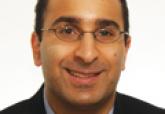A Single-Center Study
Researchers at Mayo Clinic compared strokes in patients with and without OSA. They examined data from patients who had their first ischemic stroke within one year after undergoing polysomnography. Among patients with OSA, 72% of strokes were of a cardioembolic mechanism. In the group without OSA, 33% were cardioembolic. “The frequency of cardioembolic stroke increased as OSA severity increased, and that relationship held after we adjusted for multiple vascular risk factors,” said Dr. Lipford. The relationship remained after accounting for history of atrial fibrillation or atrial flutter. The results suggest that there may be a high burden of undiagnosed atrial fibrillation in people with OSA, she said.
The advent of long-term cardiac monitoring has raised the question of who should receive monitoring to screen for occult atrial arrhythmia. “This is an expensive procedure that sometimes requires an invasive procedure,” said Dr. Lipford.
The American Heart Association/American Stroke Association guidelines in 2014 advised that 30-day monitoring is reasonable within six months of a cardioembolic stroke, but the statement does not guide neurologists as to which patients are the right candidates. Screening may be warranted in patients with OSA, Dr. Lipford said.
Studies have found that long-term monitoring detects atrial fibrillation. “The EMBRACE study used 30-day noninvasive monitoring and looked at patients who had cryptogenic stroke and in the first 24 hours of telemetry monitoring had no evidence of arrhythmia. Over that 30-day period, they picked up on atrial fibrillation in 16% of the patients studied. That compares to 3.2% of controls who underwent traditional medical follow up. The CRYSTAL AF study used an insertable cardiac monitor and looked at patients over one year. They picked up on atrial fibrillation in 12.4% of patients.” The percentage of patients with atrial fibrillation is “on the smaller side,” Dr. Lipford said. “But if we start those patients on anticoagulation therapy, they are getting a dramatically reduced risk of having a stroke, compared with maintaining them on the antiplatelet therapy.”
—Jake Remaly
Suggested Reading
Gami AS, Pressman G, Caples SM, et al. Association of atrial fibrillation and obstructive sleep apnea. Circulation. 2004;110(4):364-367.
Gladstone DJ, Spring M, Dorian P, et al. Atrial fibrillation in patients with cryptogenic stroke. N Engl J Med. 2014;370(26):2467-2477.
Kanagala R, Murali NS, Friedman PA, et al. Obstructive sleep apnea and the recurrence of atrial fibrillation. Circulation. 2003;107(20):2589-2594.
Lipford MC, Flemming KD, Calvin AD, et al. Associations between cardioembolic stroke and obstructive sleep apnea. Sleep. 2015;38(11):1699-1705.
Mansukhani MP, Calvin AD, Kolla BP, et al. The association between atrial fibrillation and stroke in patients with obstructive sleep apnea: a population-based case-control study. Sleep Med. 2013;14(3):243-246.
Mehra R, Benjamin EJ, Shahar E, et al. Association of nocturnal arrhythmias with sleep-disordered breathing: The Sleep Heart Health Study. Am J Respir Crit Care Med. 2006;173(8):910-916.
Sanna T, Diener HC, Passman RS, et al. Cryptogenic stroke and underlying atrial fibrillation. N Engl J Med. 2014;370(26):2478-2486.
